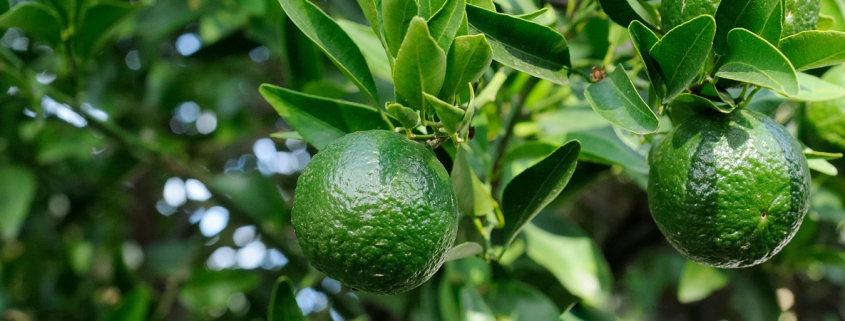Autumn Citrus Nutrition
Heading into Autumn, citrus growers are not only trying to size their crop but also ensure Autumn flush leaf health is optimal for carbohydrate production.
Zinc is a critical nutrient for leaf expansion and health of new growth, and regardless of soil type or growing area Autumn zinc sprays should be standard practice amongst citrus growers. Other nutrients of importance for leaf health include manganese, iron and magnesium. Deficiencies of manganese and iron are common on alkaline soils (eg. Sunraysia & SA Riverland) while magnesium deficiency is common on lighter acid soils such as you have in much of Queensland, WA & the MIA. If you have done February leaf analysis then your zinc levels ideally should be above 25 mg/kg and at least 35 mg/kg for manganese. If levels are lower than this then you need to look at your zinc & manganese spray program in spring and either increase rates or look at alternate products. LIG-ZINC + Mn has been used in citrus for more than 20 years in Australia’s most deficient soils with excellent results (see this zinc trial). For young trees a multi-nutrient mix like LIG-TRACE is ideal for improving growth and maintaining tree health.
As far as major nutrients are concerned, autumn is a good time to apply phosphorous, as this not only helps with sizing but the trees will also store some of this P for reproduction and cell division in the spring. Mature citrus trees are fairly efficient at mining P from the soil so levels do not need to be high for adequate supply and generally 30 kg/ha should be sufficient for maintenance requirements. Young trees may require extra due to limited root development and particularly on alkaline soils with high P fixing characteristics. MAP or DAP are good soluble sources of phosphorous as is MKP if you are on low potassium soils. If soil sulphur is low then Single Super is a better option as sulphur is required for utilization of phosphorous.
Usually by this time most or all of the tree’s nitrogen requirements should have been supplied (200-300 kg N/ha for a 50 T/ha crop). On very light soils with high rainfall there may be continued need for nitrogen to maintain general health and vigour, but always apply smaller more frequent doses of nitrogen where practical. Excess nitrogen during autumn can compromise fruit quality through increased split fruit, albedo breakdown, delayed ripening and poor colour. If nitrogen is applied during this period then it is essential that other nutrients including potassium, phosphorous, magnesium, calcium and boron are also maintained at optimal levels to balance nitrogen inputs.
Potassium is a very important nutrient for fruit sizing and ripening. Potassium requirements for bearing trees are similar to nitrogen (200-300 kg K/ha) however soil availability is quite low during Autumn and winter and therefore growers should look at supplementing soil uptake with foliar sprays during sizing. Potassium is mobile in the tree (ie. readily moves from leaves to developing fruit) so foliar sprays are an efficient and effective option for enhancing fruit quality. LIG-K + BORON has been specifically formulated for enhancing fruit size & sugar levels and is a good option for growers looking to improve fruit quality.
The autumn-winter period is also the optimum time to apply phosphonate if you feel phytophthora (eg. root, collar or brown rot) is an issue in your orchard or if you have had a wet spring and summer with soil conditions suitable for disease outbreak. PHOSIC 600 is a cost effective option for treating disease and improving general tree health. Its buffered 7.2 pH also provides superior crop safety when foliar spraying.
Foliar sprays
LIG-ZINC + Mn (5+5), LIG-ZINC + Mn (6+2)
PHOSIC 600 (Systemic Fungicide)


Leave a Reply
Want to join the discussion?Feel free to contribute!